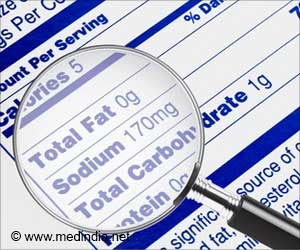Researchers now know more about a new class of toxins that might soon become as important a risk factor for heart disease and metabolic disorders as trans fats.
How your food is cooked may be as important to your health as the food itself. Researchers now know more about a new class of toxins that might soon become as important a risk factor for heart disease and metabolic disorders as trans fats.
This class of toxins, called advanced glycation end products (AGEs), are absorbed into the body through the consumption of grilled, fried, or broiled animal products, such as meats and cheeses. AGEs, which are also produced when food products are sterilized and pasteurized, have been linked to inflammation, insulin resistance, diabetes, vascular and kidney disease, and Alzheimer’s disease.A new study at Mount Sinai School of Medicine reveals that AGE levels are elevated in the blood of healthy people, and even more so in older individuals than in younger people. Of particular interest was the finding that a major determinant of the blood levels of AGEs is the amount of AGEs in the diet, not dietary calories, sugar, or fat. The study, which was done in collaboration with, and supported by, the National Institute on Aging (NIA), is published in the April issue of the Journal of Gerontology: Medical Sciences.
"AGEs are quite deceptive, since they also give our food desirable tastes and smells," says Helen Vlassara, MD, senior study author, Director of the Division of Experimental Diabetes and Aging, and Professor of Medicine and Geriatrics at Mount Sinai School of Medicine. "So, consuming high amounts of grilled, broiled, or fried food means consuming significant amounts of AGEs, and AGEs in excess are toxic. People should be given information about their AGE intake and be advised to consider their intake in the same way they would think about their trans fats and salt intake. They should be warned about their AGE levels the way they are about their cholesterol levels or cigarette smoking."
Inflammation and oxidative stress are more common in older age, so the goal of the study was to assess whether AGEs played a significant role in age-related inflammation and oxidative stress by measuring AGE levels in both young and older individuals. The study involved 172 healthy men and women who were divided into two age groups—those between the ages of 18 and 45 and those between the ages of 60 and 80. Dr. Vlassara and her team also wanted to assess whether AGE levels correlated with dietary intake. To do this, her team recorded the patient’s body weight, body fat, three-day dietary information, and collected blood samples to measure biomarkers of inflammation, such as C-reactive protein (CRP). Blood samples were used to test for two common AGEs, called carboxymethyllysine (CML) and methylglyoxal (MG), which latch on to proteins and fats.
The blood tests showed that AGE levels were 35 percent higher in individuals age 65 and older compared with those younger than age 45. The study also showed that in all of the participants, the higher the consumption of foods rich in AGEs, the higher the blood levels of AGEs, and higher the levels of CRP and other markers of inflammation.
Much to the researchers’ surprise, the study also showed that AGE levels could be very high in young healthy people. In fact, high AGE levels found in some healthy adults in this study were on par with AGE levels observed in diabetic patients in their earlier studies. The fact that healthy adults had levels similar to those seen in diabetic patients may suggest that early and prolonged exposure to these substances in the diet could accelerate the onset of diseases. Dr. Vlassara notes that the availability and consumption of AGE-rich foods is high and correlates with rising rates of diabetes and heart disease.
Advertisement
As Dr. Vlassara cautions, "although the accumulation of AGEs pose an immediate and significant health threat to the older adult population, they are also an invisible, lingering danger especially for younger people and this needs to be addressed. AGE levels should be shown on nutrition labels so everyone is aware of them when buying or preparing meals – and our studies explain why."
At the moment, changing one’s approaches to cooking is the only defense against excessive AGE consumption. There is no routine clinical test to inform individuals of their blood or dietary AGE levels nor established treatment to reduce high AGE blood levels. "The concept that food-related AGE intake is harmful is new to the general public," says Dr. Vlassara, "and scientists are now seeing how AGE intake fits with the current trends of disease epidemics. Hopefully, these wake-up signals, together with other gathering evidence at the cellular and molecular level, will accelerate our efforts to develop effective measures against excessive dietary AGEs. This issue, however, should be dealt with as an important health hazard now, rather than later."
Source-Eurekalert
SRM/B











